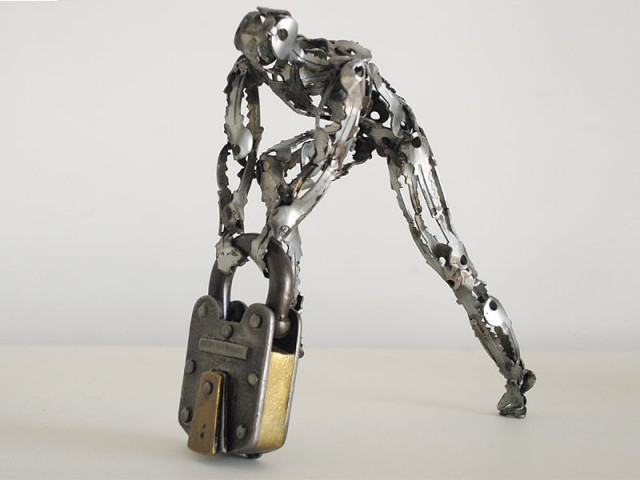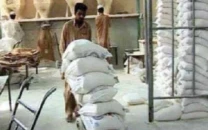Our stories, our selves: Internal battles emerge as explorations of identity
ArtChowk Gallery puts on the work of 10 artists till June 8.

Our stories, our selves: Internal battles emerge as explorations of identity
Some of the figurines, made of wire, were sprawled on the floor as if injured or dead while others were entangled with each other. Ismaeel spoke of the people who had inspired his art with a bittersweet smile.
“Most of the people I thought were friends and close acquaintances turned their back on me in fear that I would ask them to do something for me, even as minute as going to the market.” Today Ismaeel is an assistant teacher at Karachi University and runs a workshop at the institute as well. “With this wheelchair, people’s perception of me and my perception of them has drastically changed,” he candidly admits.
Indeed, the battlefield he has created speaks clearly of how everyone has to fend for themselves and watch their back in this world.
On Friday, these and other pieces by Ismaeel went on display at the ArtChowk Gallery’s Movement exhibition that features works by 10 Karachi-based artists. “The show is a unique creative hotbed of inspiration for artists who push the envelope by being highly courageous and experimental in their work,” explained the curator, Bushra Hussain. Although a concept was put forward, the artists said that they were not restricted to a location or a theme.
Finding the self
Four canvases in a row feature the silhouette of a face created by digital media in red, green, black and blue. They are described as “strange pixelated expressionless masks worn by people to fit into different society circles” by the artist, Fraz Mateen. Sharing his own example, he said that he is a part of different worlds and is in search of his identity. “I teach at the Indus Valley School of Architecture and I live at Burnes Road. I go to the mosque and I am friends with artists who come from different backgrounds.” Just like any other person in society, he has to put on different ‘personas’. “You would not be able to recognise me earlier,” he added. “I used to wear shalwar kameez, had a different haircut and a different personality altogether.”
The most painful part is when you eventually have to choose between them. “And I did,” Mateen says wistfully.
Sadia Jamal’s Asser series also tells a tale of being true to one’s self. She drew inspiration from Allama Iqbal’s concept of ‘Khudi’. Her installation features figurines of steel wool confined to four acrylic boxes. The first three figurines are placed in different positions but the fourth one has wings made of surgical blades. “It’s about struggling with the inner self, the process of breaking out of a box and eventually realising who you are even if it’s painful,” said the studio artist.
Fahim Rao’s row of terracotta fish were meant to depict people who refuse to think for themselves and continue to do as others have done before them. “People tend to follow the same religion, rules and ideas which were instilled in them without actually trying to understand anything on their own, as the expression goes they are lakir kay fakir.”
Published in The Express Tribune, May 19th, 2012.



















COMMENTS
Comments are moderated and generally will be posted if they are on-topic and not abusive.
For more information, please see our Comments FAQ